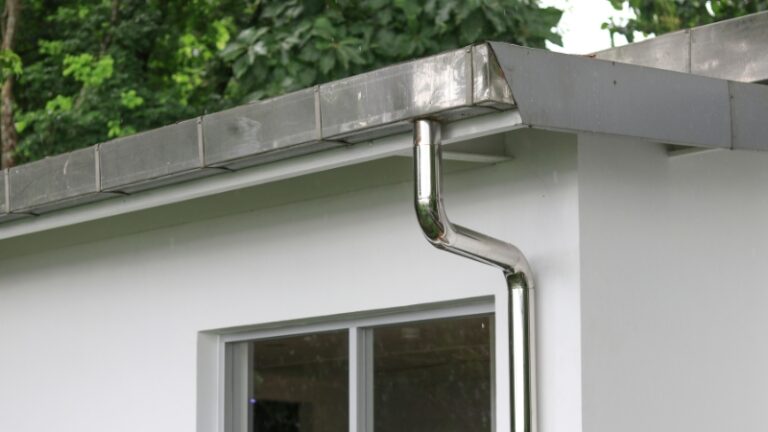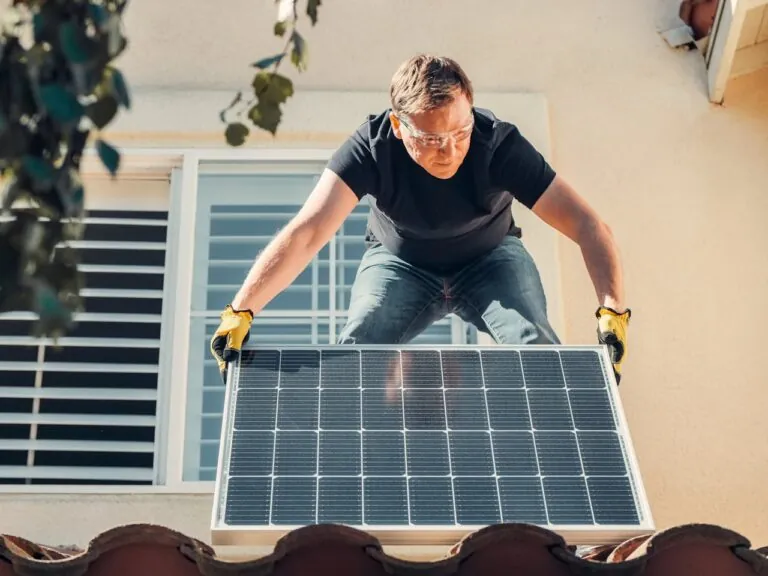Water conservation has become a crucial practice in home gardening due to the growing threat of climate change and regional water shortages.
As temperatures rise and rainfall patterns become increasingly erratic, home gardeners have a responsibility to make smarter choices about their water usage.
Efficient water use contributes to healthier plants and supports sustainable living habits.
Gardens designed with conservation in mind are more resilient, require less maintenance, and offer long-term benefits. A conscious approach to water management can also reduce runoff and pollution, contributing to a cleaner local environment.
Taking steps to reduce waste means participating in a global effort that begins at home.
Planning & Design Strategies
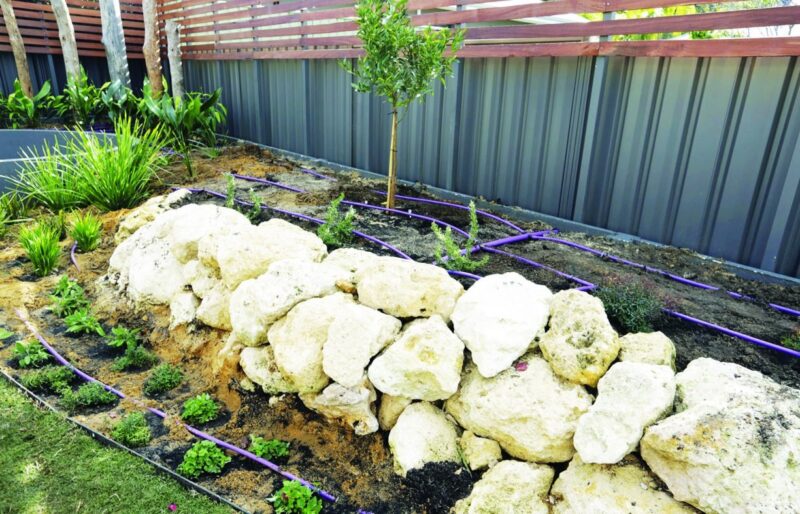
Efficient water management in gardening begins long before the first seed is planted. The planning stage shapes how water is absorbed, retained, and used across the entire space.
A well-thought-out design allows for strategic planting, reduced waste, and lower maintenance. Two key aspects form the foundation of water-wise planning: soil management and garden layout.
Several practical strategies under each of these categories can make a significant difference in long-term water conservation.
Here are key points to consider for improving soil structure and creating a garden design that promotes water efficiency:
Soil Management
Soil acts as the primary reservoir for plant hydration. When treated with care and improved over time, it can retain moisture longer, reduce runoff, and support robust plant growth.
Moisture-retentive soil eliminates the need for constant watering and builds a stable growing environment.
- Enhance soil structure with organic matter: Compost, aged manure, leaf mold, and worm castings increase water-holding capacity and create ideal conditions for root development. Loamy soil enriched with these inputs allows better moisture retention and drainage.
- Prevent soil compaction: Compacted soil restricts water flow and oxygen exchange. Avoid walking on wet soil and limit excessive tilling. Instead, use permanent paths, raised beds, and mulch layers to keep planting areas loose and airy.
- Promote healthy microbial activity: Beneficial microorganisms thrive in well-amended soil and help break down organic materials. These microbes enhance nutrient availability and further boost the soil’s ability to retain water.
Maintaining a living, thriving soil system provides the foundation for efficient water use throughout the garden.
Garden Design for Water Efficiency
Smart layout decisions shape how effectively water moves through and stays in the garden. Positioning, grouping, and hardscaping all influence water behavior. A water-wise design saves resources and simplifies upkeep.
- Group plants based on water needs: Avoid random placement. Cluster high-water plants in the same zones to target irrigation, and locate drought-tolerant species in areas with minimal supplemental watering.
- Create rain gardens: Depressions in the ground planted with water-tolerant species allow stormwater to soak in gradually instead of running off. These areas serve both as collection basins and natural filtration zones.
- Use permeable surfaces for walkways and patios: Gravel, decomposed granite, and permeable pavers let water seep into the soil instead of evaporating or being lost to runoff.
- Install gravel gardens in dry, sunny areas: These spaces combine drought-resistant plants with gravel mulch to reduce evaporation. Weed growth is minimized, and maintenance is greatly simplified.
- Choose xeriscape designs where appropriate: Rely on hardy, water-thrifty plants and limit lawn space to reduce irrigation needs significantly.
Efficient Irrigation Techniques
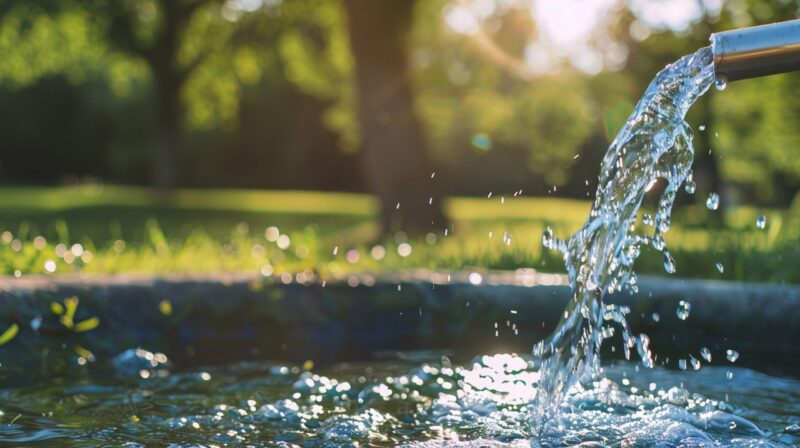
Efficient irrigation plays a central role in reducing water waste while maintaining plant health. Instead of using outdated sprinklers or inconsistent hand watering, modern methods allow for precise, targeted, and automated watering tailored to each garden’s needs.
Smart technologies, direct delivery systems, and proper watering routines ensure that every drop counts.
Smart Irrigation Technologies
Technology provides gardeners with tools to manage it with greater precision and less guesswork.
Weather-based controllers, soil moisture sensors, and programmable timers adapt to the changing needs of a garden.
These systems can significantly cut water use while promoting steady plant growth.
Key smart technologies include:
- Weather-based irrigation controllers adjust watering schedules according to temperature, humidity, and rainfall forecasts, reducing waste during cooler or rainy days.
- Timers integrated with drip systems provide regular, measured watering without over-saturating the soil.
- Soil moisture sensors track current conditions and activate watering only when needed.
- Mobile app control systems allow gardeners to monitor and adjust irrigation remotely.
- Zone-based irrigation control divides the garden into sections with similar watering needs, preventing overwatering of drought-tolerant areas.
These tools are not just suitable for large plots. Smaller gardens and urban spaces benefit equally by saving water and ensuring consistency.
Targeted Water Delivery
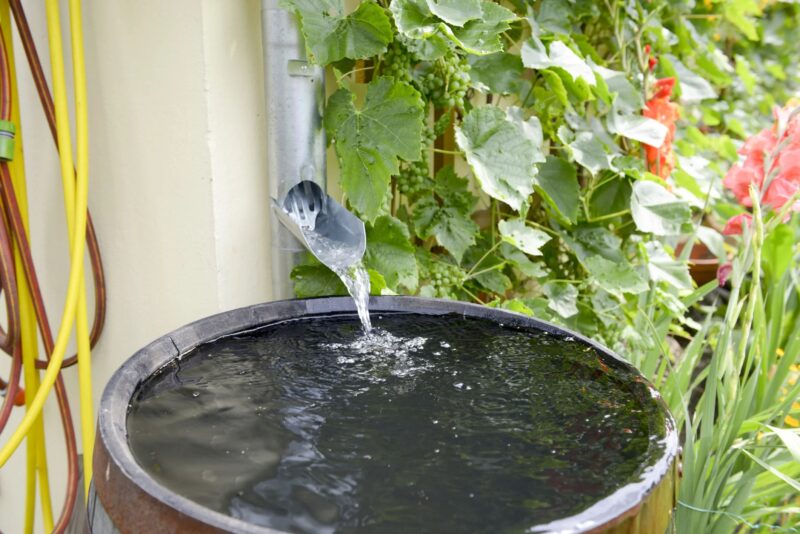
Delivering water directly to plant roots minimizes waste and boosts efficiency. Traditional sprinklers often spray wide areas, causing runoff and evaporation before moisture reaches the root zone.
Drip systems and soaker hoses allow slow, steady release directly where it’s needed most.
Effective targeted watering methods include:
- Drip irrigation systems that release water slowly and directly at root level.
- Soaker hoses that distribute water evenly along their length, ideal for rows of vegetables or densely planted beds.
- Micro-sprayers for delicate seedlings or hard-to-reach containers.
- Low-pressure setups that reduce splashing, especially helpful on slopes or uneven terrain.
- Hose-end shutoff valves to control flow and prevent overwatering specific zones.
Avoiding foliage watering is critical, especially in warm climates, as sitting on leaves invites disease. Delivering water to the soil where roots can absorb it is the most efficient path to plant health.
Watering Practices
Adopting the right habits makes a major difference in garden efficiency. Timing, technique, and consistency all contribute to healthier plants and reduced consumption.
Practical watering habits include:
- Watering early in the morning when temperatures are cooler and wind is low to limit evaporation.
- Watering slowly and deeply to encourage deep root growth, resulting in stronger, drought-resistant plants.
- Maintaining a regular schedule to help plants establish predictable hydration cycles.
- Observing soil moisture manually before watering to avoid over-saturating.
- Adjusting frequency during seasonal changes to accommodate fluctuations in weather and plant needs.
Regular checks of hoses, emitters, and pressure can also reveal leaks or clogs before they become major problems.
Harvesting & Reusing Water
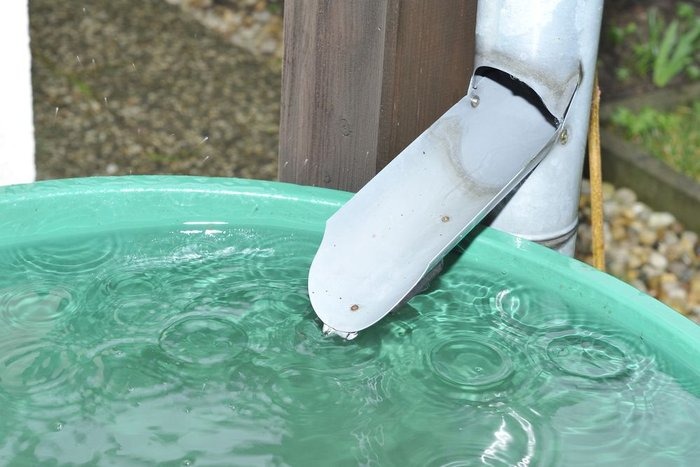
Using alternative water sources is one of the most efficient and sustainable ways to reduce dependence on municipal systems.
Gardeners can cut bills and support eco-conscious habits by harnessing rainwater and repurposing safe household greywater.
Two major approaches stand out in this strategy: rainwater collection and greywater use.
Rainwater Collection
Collecting rainwater provides an efficient, eco-conscious way to supplement irrigation needs.
Barrels placed beneath downspouts can capture substantial amounts of runoff during even light rain events.
Stored water can be used during dry periods, easing the demand on public supplies and reducing your monthly water bill.
Larger systems, such as underground tanks or cisterns, can serve expansive gardens. These can be paired with drip irrigation lines or gravity-fed systems to distribute without pumps or electricity.
Rainwater is naturally soft and free of many additives found in municipal sources. It is ideal for sensitive plants, especially seedlings, that benefit from cleaner hydration.
Key benefits of rainwater collection:
- Cuts monthly usage and associated costs
- Provides chemical-free hydration for plants
- Helps mitigate stormwater runoff and erosion
- Can be stored in scalable systems (barrels to underground tanks)
For homeowners looking to implement or expand rainwater harvesting systems with tools like aerators, debris filters, or pond maintenance equipment, you can find on this site a range of restoration and water circulation products suitable for enhancing water reuse efficiency.
Greywater Use
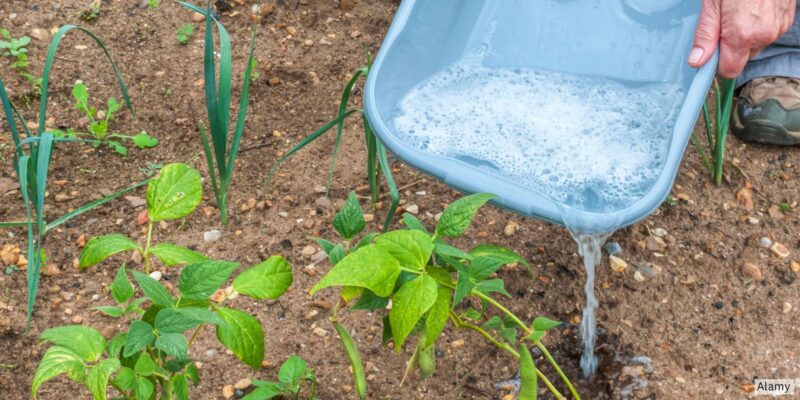
Greywater reuse turns leftover water into a functional garden resource.
It includes water previously used in showers, bathtubs, sinks, or laundry machines, provided it does not contain harsh detergents or chemicals.
When redirected properly, greywater hydrates ornamental gardens and non-edible plant areas without additional strain on freshwater supplies.
Systems for capturing and redirecting greywater vary. At a basic level, it can be as simple as collecting water in a bucket. At a more advanced level, integrated plumbing systems direct greywater into external irrigation networks.
Safety must always come first. Greywater should never touch edible plants unless processed through approved filtration methods. Regulations vary, so always confirm local rules before setup.
Best practices for greywater use:
- Use biodegradable, plant-safe soaps and detergents
- Avoid storing untreated greywater longer than 24 hours
- Redirect greywater away from edible plant zones
- Filter or screen particles before irrigation
- Follow regional health and plumbing guidelines
Plant Selection & Mulching
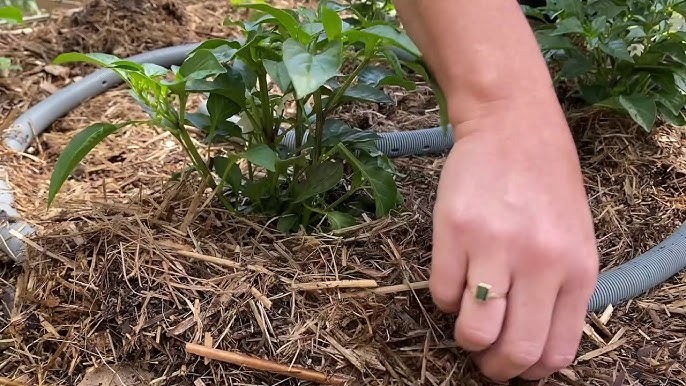
Thoughtful plant selection and mulching techniques dramatically reduce waste in gardens. Plants adapted to local conditions often need less watering and attention.
Meanwhile, mulching helps conserve moisture already present in the soil, creating a powerful one-two punch for sustainability.
Drought-Tolerant Planting
Choosing plants that thrive in low-water conditions helps reduce irrigation demands. Native plants or drought-adapted species are often the best candidates.
Once established, these plants flourish with minimal water input and are better suited for survival during prolonged dry periods.
Spacing and placement play a role in water conservation. Drought-tolerant plants should be located farther from primary sources and grouped together to streamline maintenance and support efficient watering schedules.
Examples of effective drought-tolerant choices include lavender, yarrow, sedum, Russian sage, and ornamental grasses. These plants bring texture and seasonal color while standing up to environmental stress.
Top drought-tolerant planting practices:
- Use native or regionally adapted species
- Group plants by water needs for efficient irrigation
- Locate low-water species away from automatic watering zones
- Choose varieties with thick leaves, waxy coatings, or deep roots
Mulching Techniques
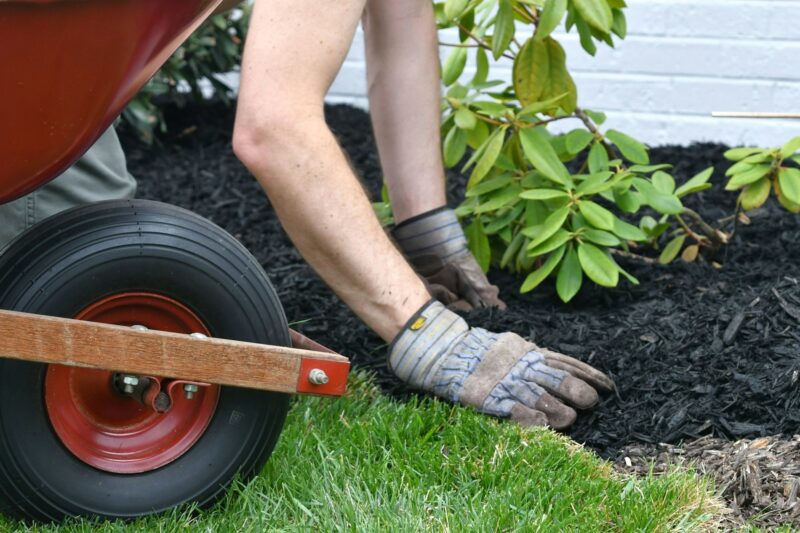
Mulch reduces evaporation, keeps soil temperatures stable, and prevents weed growth. It acts as a protective barrier, trapping moisture in the root zone and shielding soil from sun exposure.
Organic mulches, such as bark, straw, or composted leaves, also improve soil texture as they decompose.
Apply mulch in a layer around 2 to 4 inches deep. Avoid piling mulch against stems, which can cause rot or pest problems. Keep a slight gap around plant bases for airflow.
Mulch should be replenished regularly as it breaks down, especially during peak growing seasons. Selecting the right type of mulch for your plants and climate boosts overall efficiency.
Benefits of using organic mulch:
- Slows down evaporation from the soil
- Reduces weed competition and maintenance
- Protects roots from temperature extremes
- Adds nutrients to soil as it decomposes
- Prevents soil erosion and compaction
The Bottom Line
Water-conscious gardening offers long-lasting rewards. By making intentional choices in layout, irrigation, and plant selection, gardeners reduce waste and improve resilience.
Even small steps create measurable change, supporting healthy ecosystems and reducing environmental strain.
Gardens designed with efficiency in mind require less effort and yield more consistent results. Adopting water-saving strategies not only benefits the plants but also contributes to broader efforts in sustainability, community awareness, and ecological balance.





